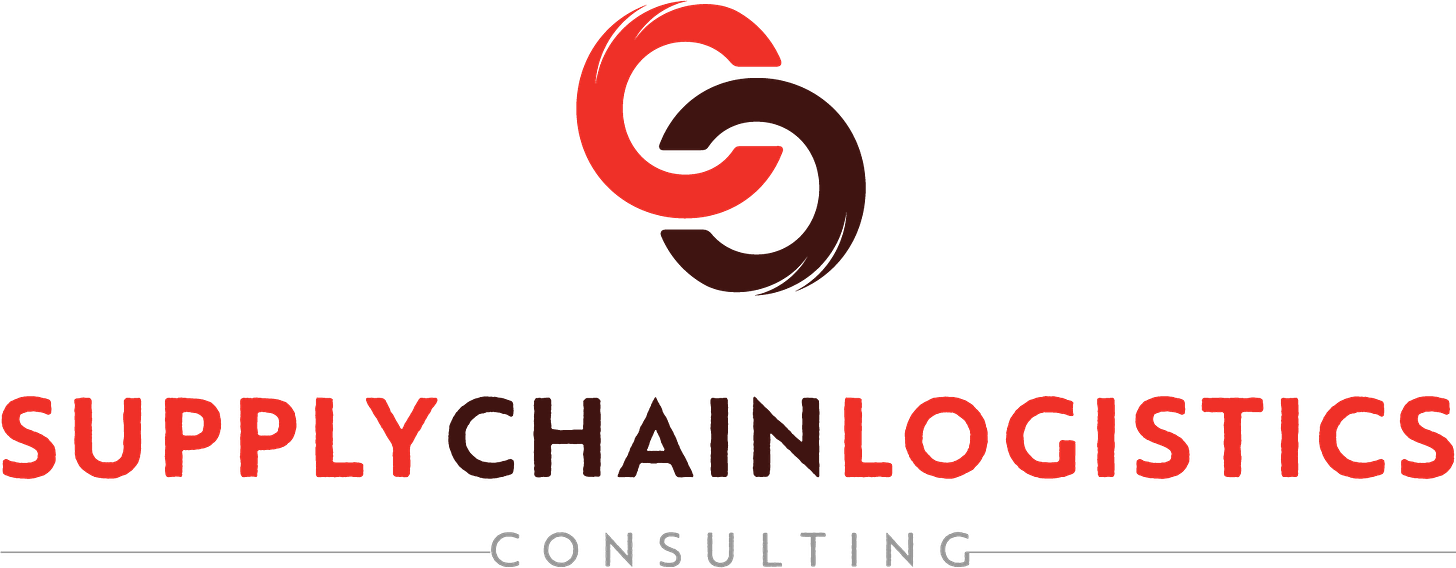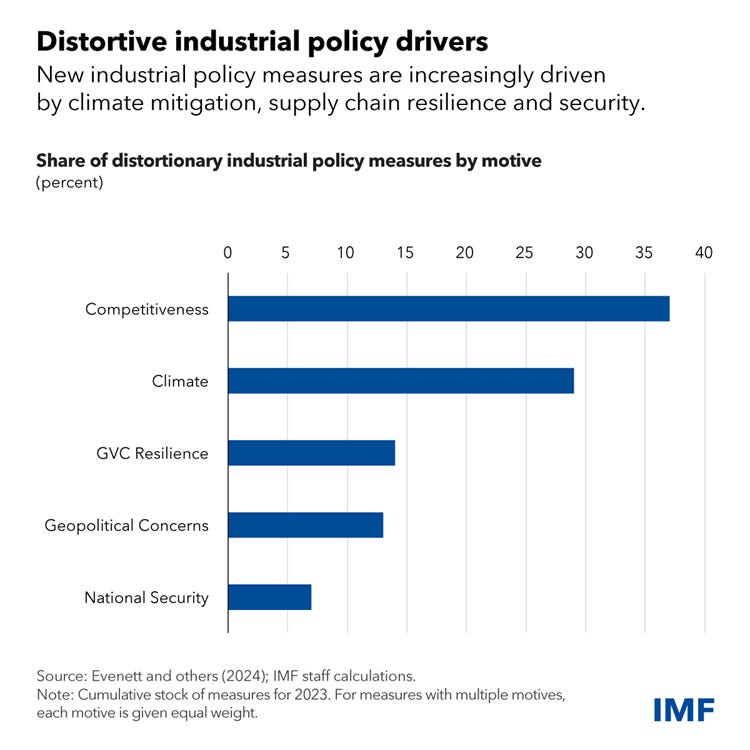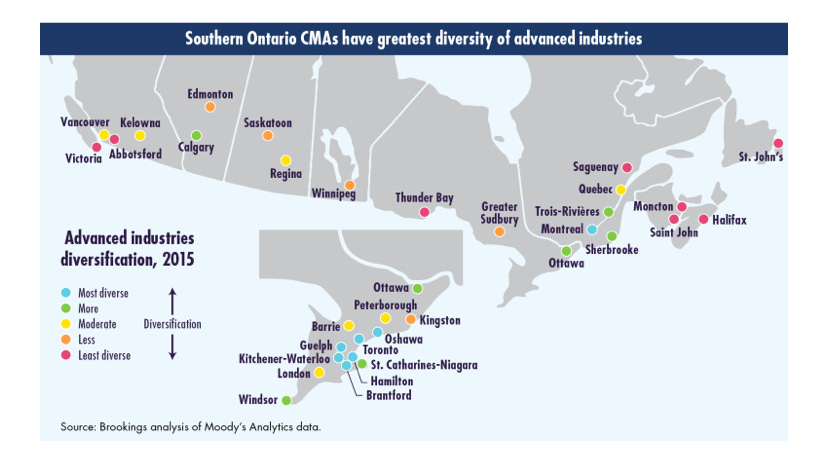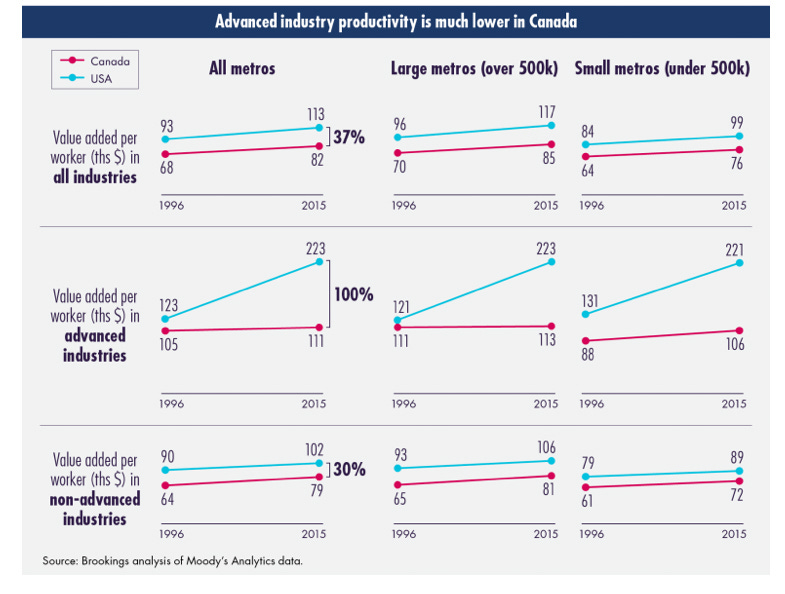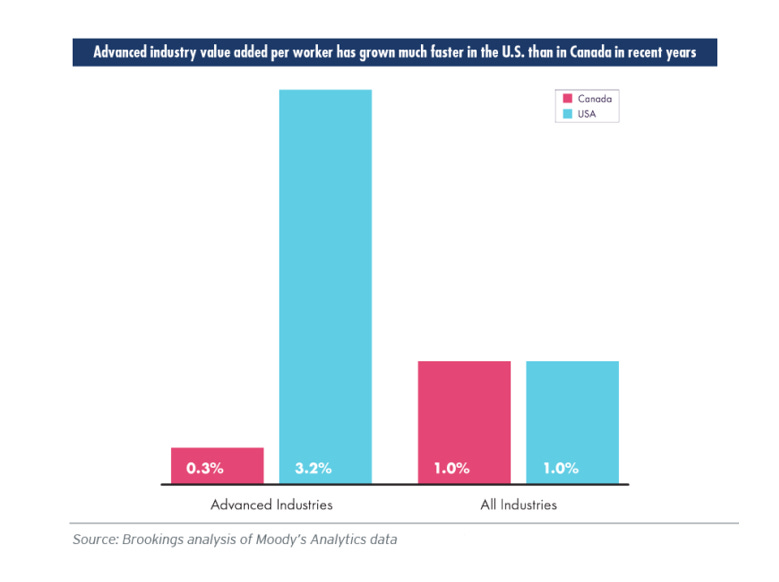SCLCI’s Early Editions: “Industrial Policy and Advanced Sector Growth.”
The New Focus for Industrial Policy Makers
In 2024 the IMF reported that only 1/3 of all global national policies were focused on increasing competition while the majority centered around other priorities, signaling a new effort to reshape development and to invest in new technologies.
The majority of recent global policies focused on these three areas:
- Climate Mitigation
- Supply Chain Resilience
- Security
“Recent measures focus more on the green transition and economic security, and less on competitiveness.
Competitiveness was the objective for one-third of all industrial policy measures last year. The remaining two-thirds were motivated by climate mitigation, supply chain resilience, and security considerations.”
https://www.imf.org/en/Blogs/Articles/2024/04/12/industrial-policy-is-back-but-the-bar-to-get-it-right-is-high
Without policy the responsibility of individual corporations to perform by delivering shareholder value would inevitably maintain status quo. This draws further attention to the crisis of climate change, increases friction between private markets and governments, while also highlighting the lack of financial incentives required to attract investment in an alternative future.
Industrial policy has shifted the focus of development and the sectors where this is most prevalent are in advanced technologies.
Most Active Sectors:
- Military-civilian dual use products
- Advanced technologies
- Components for advanced technologies
Advanced technologies include semiconductors and low carbon technologies, whereas the components are made of raw materials such as critical minerals.
Required. Change at a Fast Pace.
It is the pace of change that requires this intervention at the level of government and global policy makers despite the risk of overwhelming market forces and stifling innovation.
Policy makers must have the balance of power and wherewithal to manage themselves and reduce influential forces where it may lead to oppression of of highly competitive firms and instead act as a punitive factor that artificially restrains performance of the free market.
“The Four C’s of Productivity Growth”
Advanced-sector productivity growth is in reliant on these factors;
1. Capital availability,
2. Competition levels,
3. Connectivity, and
4. Technological Complexity.
#business #development #innovation #suplychain
Who Bears the Cost?
The burden of change and who pays for it points to how industrial policy can quickly derail economic vibrancy in functional market systems. The cost is often borne by a nations inhabitants when global trade does not flow freely, prices of commodities rise, and when scarcity is due to policy rather than real supply shortages.
The IMF, private market, and government, are right to take caution and monitor the effects of complex economic conditions. These policies have an outsized impact at a global scale and require considerable attention. Without mitigation there is a reduced ability to maintain global stability, avoid excessively harming competition in business, and greater potential for rejection of such measures by those most effected in price escalation.
In Pursuit of “Worthy” Goals
A reintroduction of heavy industrial policy can be observed in characteristics of a reduced focus on competition. This is paired with an increased use of government subsidies in select areas of development and are most obvious in the effort to hasten a transition to the green economy.
Market forces are impacted through the economic pressures and the incentives being used to steer the industry away from risk and towards activities perceived as being helpful and fostering future resilience.
In Canada…
We’re Goin’ Through Changes.
Overwhelming evidence supported the lagging economic performance of Canada’s advanced technology sector growth. Most notably, the country’s dependence on energy exports to supply the majority share of high-output, well-paying jobs that require skilled labour, were mostly related to oil and gas extraction. Others included production in automotive and aerospace and were located in the eastern region, whereas information technology were widely spread throughout.
Canada is remarkably diverse in industry and this bodes well for the future of development in advanced technologies given the proper support and infrastructure is put into place.
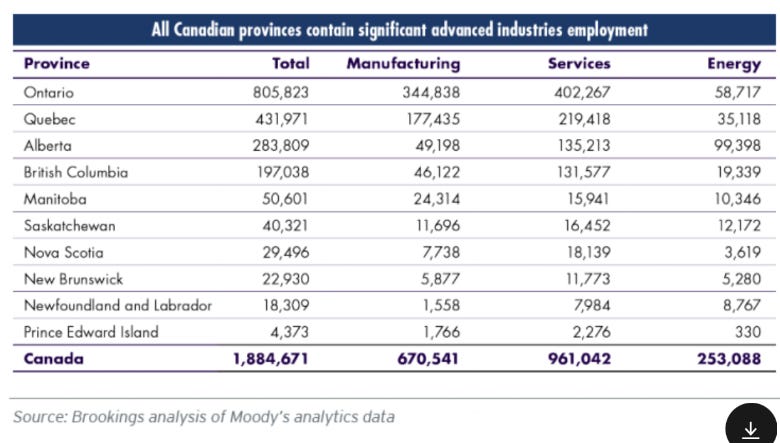
Canada’s productivity per worker has declined over time and this is most evident when the statistics are compared with its American neighbor to the south. The situation may have changed slightly with federal funding and strategizing however, the 2018 report on Canada’s Advanced Industries shows the US has had an unmatched acceleration and that Canada was actually becoming less effective in this regard
Growing Canada’s Advanced Sector
Detailed in a Brookings report from 2015 the suggested correction to Canada’s lagging productivity can be partially plotted using a framework for ‘The four C’s of productivity growth’.
Policy makers must have the balance of power and wherewithal to manage themselves and reduce influential forces where it may lead to oppression of of highly competitive firms and instead act as a punitive factor that artificially restrains performance of the free market.
Recommended. 4C Commitments for Canada.
Capital Deepening:
Attract Investment in ICT, Support Growth of Canadian Venture Capital, and Supply Government Matched Funding.
Expanding Competition:
Promote Innovators Risk and Entrepreneurship with Balanced Rewards and Deregulation.
Increasing Connectivity:
Make Globally Relevant and Integrated Networks using Infrastructure and Institutions.
Broadening Complexity:
Starting with Smart-Specialization supported by Data Driven Regional Investment from Federal Sources.
View the Report Summary (PDF).
References :
“Industrial Policy is Back But the Bar to Get it Right Is High.” April 12 2024, by A. Ilyina et. al. (IMF.org) https://www.imf.org/en/Blogs/Articles/2024/04/12/industrial-policy-is-back-but-the-bar-to-get-it-right-is-high
“Canada’s Advanced Industries.” June 2018, By M. Munro, Martin Prosperity Institute, Rotman School of Management, (download the summary: https://www.brookings.edu/wp-content/uploads/2018/06/Canada-Advanced-Industries_Summary.pdf)
You might be interested in;
IMF’s Fiscal Monitor (April 2024):
https://www.imf.org/en/Blogs/Articles/2024/04/10/industrial-policy-is-not-a-magic-cure-for-slow-growth
Climate Goals:
https://www.imf.org/en/Publications/WP/Issues/2024/02/09/Emissions-Reduction-Fiscal-Costs-and-Macro-Effects-A-Model-based-Assessment-of-IRA-Climate-544749
Canada’s Advanced Economy:
https://www.bcbc.com/insight/oecd-predicts-canada-will-be-the-worst-performing-advanced-economy-over-the-next-decade-and-the-three-decades-after-that/
https://www.brookings.edu/articles/canadas-advanced-industries/
Supply Chain Logistics Consulting has years of experience helping people at companies like yours to achieve positive results.
Visit and Subscribe on all our channels.
🌐
📩Company Newsletter
𝕏 Connect
🔖 Join LinkedIn
✅ WhatsApp ☎
👉And don’t forget to share this Early Edition channel.


